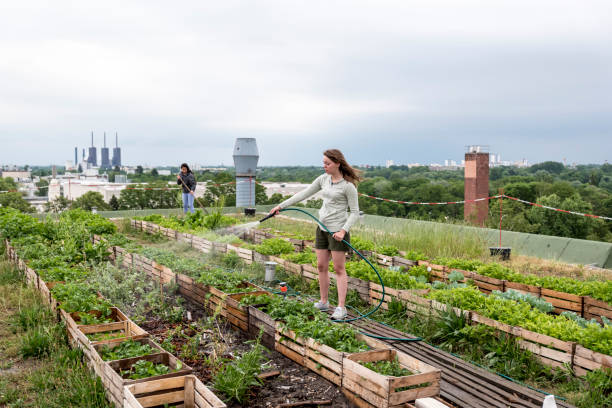Adapting plant selections for urban microclimates
Urban microclimates vary across blocks and buildings. This article outlines practical plant selection and management strategies—from soil health and composting to container techniques, irrigation, and native plants—to help urban gardeners and landscapers design resilient green spaces that suit local conditions.

Cities create a mosaic of microclimates: sun-baked rooftops, cool shaded alleys, wind corridors between towers, and heat-reflecting pavements. Adapting plant selections to these local conditions reduces stress, conserves water, and improves survival rates. Start by mapping light, wind, and moisture patterns at different times of day, then choose species and planting techniques that match each micro-site. Thoughtful selection paired with soil improvement, proper irrigation, and seasonal care turns constrained urban spaces into productive, biodiverse plantings that support pollinators and community well-being.
Gardening choices for urban microclimates
Effective gardening in cities begins with observation and selection. Identify full-sun, partial-shade, and full-shade pockets and list plants suited to each. Choose hardy cultivars tolerant of reflected heat, air pollution, and compacted soils. Mix growth habits and rooting depths to stabilize soil and reduce pest pressure. Use companion planting to improve resilience and consider edibles as part of planting palettes where appropriate. Regular monitoring of plant performance helps refine choices across seasons and micro-sites.
Landscaping and xeriscape methods
Landscape design can reduce heat stress and water demand. Apply xeriscape principles: group plants by water needs, reduce lawn areas, and prioritize drought-adapted perennials and groundcovers. Use light-colored, permeable paving to limit reflected heat and improve infiltration. Layered plantings—trees, shrubs, and understory plants—create shade, lower surface temperatures, and provide wind protection. Design for seasonal interest and maintenance access to keep urban landscapes functional and attractive.
Soil health, composting and mulching
Improving soil health is a top priority in urban settings where soils are often compacted and low in organic matter. Add compost to increase water retention, porosity, and microbial life. Municipal compost programs and small-scale on-site composting supply steady amendments for beds and containers. Mulching conserves moisture, moderates temperature swings, and suppresses weeds; keep organic mulch 2 to 4 inches deep and clear of plant stems. Periodic soil testing helps target nutrient and pH adjustments without overapplication.
Irrigation and pruning practices
Water management and pruning are complementary practices for constrained urban plantings. Use drip irrigation or soaker lines to deliver water directly to roots and minimize evaporation; pair these systems with timers or moisture sensors. Group plants with similar irrigation needs to simplify schedules. Pruning maintains plant size, improves light penetration, and reduces wind damage in tight spaces. Favor deep, infrequent watering when feasible to encourage stronger root systems in limited soil volumes.
Container planting, seed starting and succession planting
Containers expand planting opportunities where in-ground soil is limited. Choose high-quality potting mixes that drain well and retain enough moisture for roots; top-dress or refresh media annually. Seed starting indoors broadens species selection and allows staggered planting to suit space constraints. Succession planting keeps containers and raised beds productive by rotating crops and following quick-growing crops with longer-season specimens. Match plant root habits and feeding needs when grouping species in shared containers.
Native plants, permaculture, pollinators and urban farming
Prioritize native plants when possible, as they often require less supplemental irrigation and provide reliable resources for pollinators. Create continuous bloom cycles to support bees and butterflies throughout seasons. Apply permaculture ideas like water capture, mulched swales, and stacked functions to increase efficiency in small plots. Urban farming techniques—raised beds, vertical gardens, and edible hedges—integrate food production with biodiversity goals and educational opportunities even in compact yards or community spaces.
Conclusion
Adapting plant selections to urban microclimates depends on careful site assessment and matching species and practices to local conditions. Focus on improving soil health with composting and mulching, use water-wise irrigation, employ containers and seed starting where soil is limited, and select native and drought-tolerant species to support pollinators. With attentive management and deliberate design, urban green spaces can become resilient, productive, and beneficial parts of the urban ecosystem.





